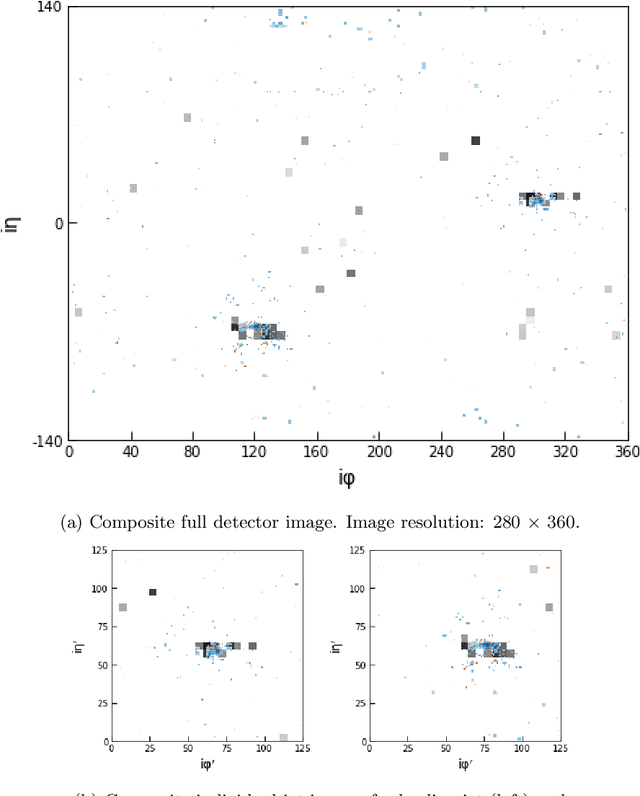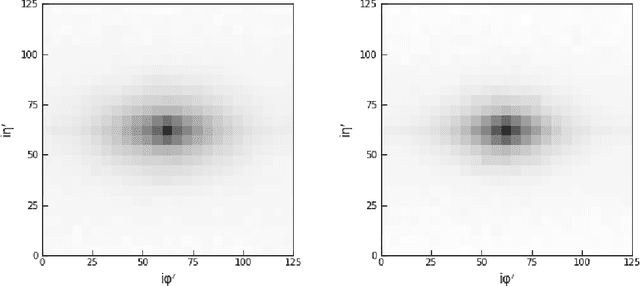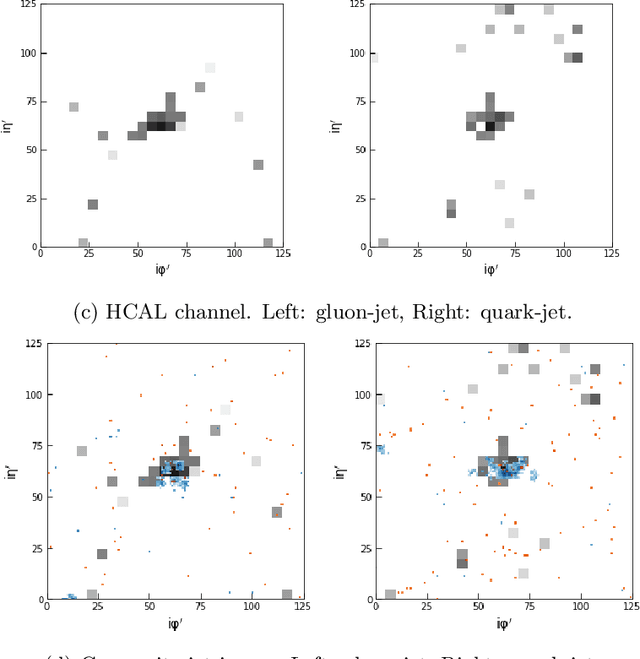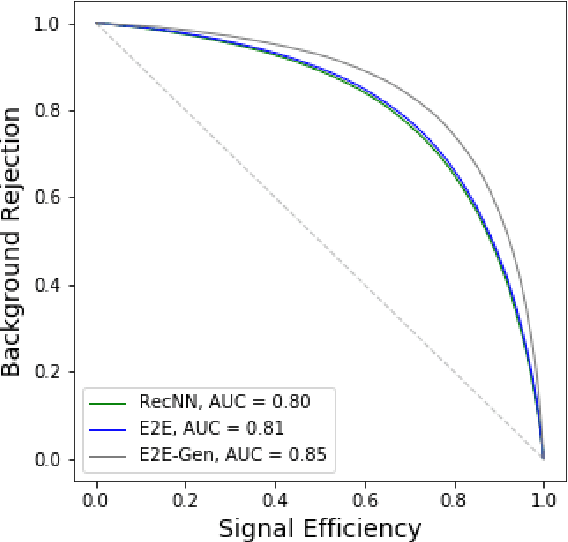John Alison
Toward Model-Agnostic Detection of New Physics Using Data-Driven Signal Regions
Sep 11, 2024Abstract:In the search for new particles in high-energy physics, it is crucial to select the Signal Region (SR) in such a way that it is enriched with signal events if they are present. While most existing search methods set the region relying on prior domain knowledge, it may be unavailable for a completely novel particle that falls outside the current scope of understanding. We address this issue by proposing a method built upon a model-agnostic but often realistic assumption about the localized topology of the signal events, in which they are concentrated in a certain area of the feature space. Considering the signal component as a localized high-frequency feature, our approach employs the notion of a low-pass filter. We define the SR as an area which is most affected when the observed events are smeared with additive random noise. We overcome challenges in density estimation in the high-dimensional feature space by learning the density ratio of events that potentially include a signal to the complementary observation of events that closely resemble the target events but are free of any signals. By applying our method to simulated $\mathrm{HH} \rightarrow 4b$ events, we demonstrate that the method can efficiently identify a data-driven SR in a high-dimensional feature space in which a high portion of signal events concentrate.
End-to-End Jet Classification of Quarks and Gluons with the CMS Open Data
Feb 21, 2019



Abstract:We describe the construction of end-to-end jet image classifiers based on simulated low-level detector data to discriminate quark- vs. gluon-initiated jets with high-fidelity simulated CMS Open Data. We highlight the importance of precise spatial information and demonstrate competitive performance to existing state-of-the-art jet classifiers. We further generalize the end-to-end approach to event-level classification of quark vs. gluon di-jet QCD events. We compare the fully end-to-end approach to using hand-engineered features and demonstrate that the end-to-end algorithm is robust against the effects of underlying event and pile-up.
 Add to Chrome
Add to Chrome Add to Firefox
Add to Firefox Add to Edge
Add to Edge